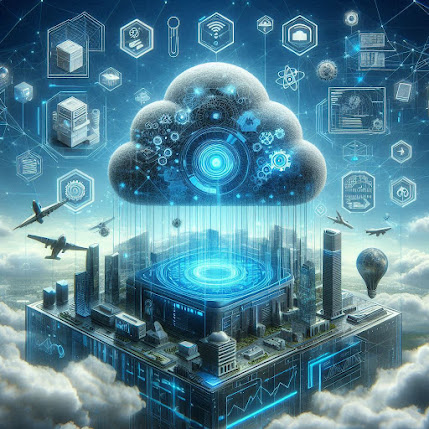Edge Computing and IoT: The Future of Real-Time Data Processing
The
rapid growth of the Internet of Things (IoT) has generated an unprecedented
volume of data, necessitating new ways of processing and managing information
efficiently. Edge computing, a paradigm that brings computation closer to data
sources, is revolutionizing the way devices interact with networks and cloud
infrastructures. This article explores the advancements in edge computing and
IoT, their benefits, challenges, and real-world applications.
1. Understanding Edge Computing
Edge
computing is a decentralized computing model where data processing occurs near
the source of data generation rather than relying solely on cloud-based
servers. This reduces latency, enhances security, and optimizes bandwidth
usage. By enabling real-time decision-making, edge computing is particularly
beneficial for industries that require instant data analysis, such as
healthcare, autonomous vehicles, and industrial automation.
2. IoT and Its Synergy with Edge Computing
The
Internet of Things (IoT) refers to a network of interconnected devices embedded
with sensors and software that enable data collection and communication.
Traditionally, IoT devices have relied on centralized cloud computing for
processing. However, as the number of IoT devices grows, cloud dependence
results in network congestion, latency issues, and increased operational costs.
Edge computing mitigates these challenges by processing data locally, leading
to faster response times and improved efficiency.
3. Key Benefits of Edge Computing in IoT
·Reduced Latency: Processing data closer to the source minimizes delays, crucial for
applications like autonomous driving and real-time monitoring.
·Improved Security & Privacy: Sensitive data can be processed locally, reducing
exposure to cyber threats associated with cloud storage.
·Optimized Bandwidth Usage: Edge computing decreases the need to transmit large
amounts of data to the cloud, conserving bandwidth.
·Enhanced Reliability: By reducing dependence on cloud servers, edge computing
ensures continuous operation even in low-connectivity environments.
4. Applications of Edge Computing and IoT
a) Smart
Cities
Edge-enabled
IoT devices in smart cities improve traffic management, waste disposal, and
energy efficiency by analyzing data in real time. Smart streetlights and
intelligent surveillance systems enhance urban safety and sustainability.
b) Healthcare
and Remote Monitoring
Wearable
devices and smart medical sensors leverage edge computing to monitor patients'
health conditions in real-time, reducing hospital visits and enabling immediate
medical intervention when necessary.
c) Industrial
Automation
Factories
and manufacturing plants utilize edge computing for predictive maintenance,
quality control, and process optimization. By analyzing machine performance
on-site, companies can prevent costly downtimes.
d) Autonomous
Vehicles
Self-driving
cars rely on real-time data processing to make instant navigation and safety
decisions. Edge computing enhances vehicle-to-vehicle (V2V) and
vehicle-to-infrastructure (V2I) communication for improved road safety.
e) Retail
and Smart Supply Chains
Retailers
use edge computing for personalized customer experiences, real-time inventory
tracking, and fraud detection. Smart supply chains enhance logistics through
IoT-enabled tracking systems.
5. Challenges and Considerations
Despite
its numerous advantages, edge computing presents several challenges:
·Scalability Issues: Managing and maintaining numerous edge nodes can be complex.
·Data Management & Storage: Ensuring proper data handling while processing
information at the edge requires robust architectures.
·Security Concerns: While edge computing enhances privacy, edge devices can become attack
vectors if not properly secured.
·Interoperability: Standardization across different IoT platforms and protocols is
necessary for seamless integration.
6. The Future of Edge Computing and IoT
As
5G networks continue to expand, edge computing will become even more powerful,
enabling ultra-fast data transmission and enhancing IoT applications. The rise
of AI-powered edge devices will further automate decision-making and improve
predictive analytics. Additionally, the integration of blockchain technology
with edge computing is expected to enhance security and data integrity.
Conclusion
Edge computing and IoT are redefining how data is processed and utilized, unlocking new possibilities in various industries. As these technologies continue to evolve, organizations must adapt to leverage their full potential while addressing associated challenges. With faster, more secure, and efficient computing at the edge, the future of IoT-driven innovation looks promising.

No comments:
Post a Comment